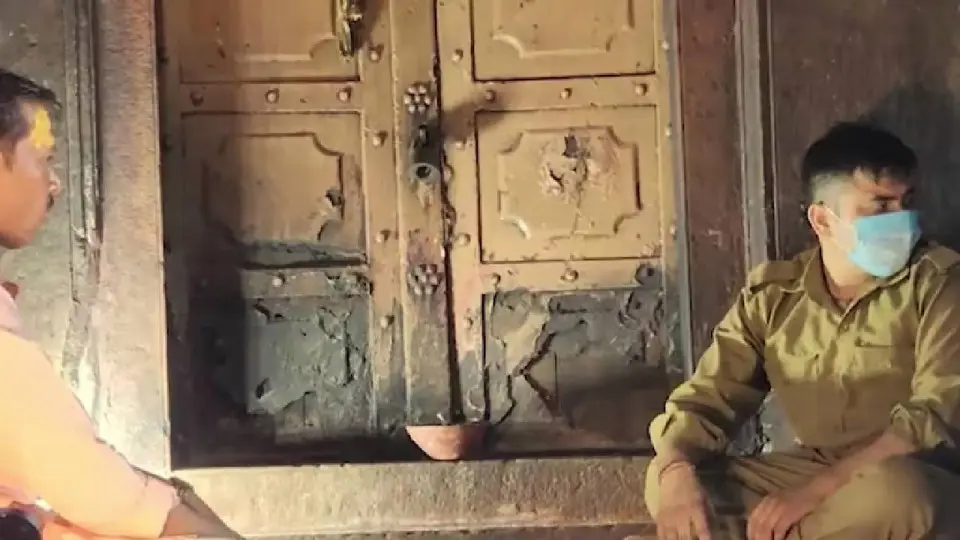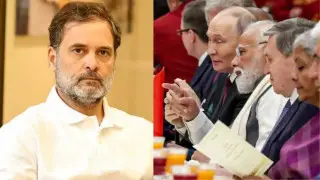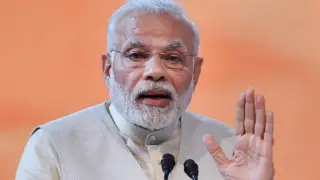
Credit:Top Indian News ( )
National News: A Supreme Court-appointed panel reopened Mathura’s Banke Bihari temple treasure chambers on Dhanteras, uncovering items that had remained sealed since 1971. Priests present during the inspection claimed the discovery of a gold bar, three large silver bars, and gemstones of red and green shades. They also reported precious coins and metal utensils among the finds. Each recovered bar was estimated to be around three to four feet in length, sparking curiosity among devotees and locals alike about the temple’s long-guarded wealth.
The exercise was conducted under tight supervision, with Mathura police, administrative officials, and members of the monitoring committee present inside the underground rooms. According to DSP Sandeep Singh, the entire survey was video recorded to ensure transparency. Local priests described the moment as historic, as the vaults had been sealed since Indira Gandhi’s era. The renewed exploration was meant not only to document valuables but also to assess the condition of the underground chambers, which had remained untouched for more than half a century.
ADM (Finance and Revenue) Pankaj Kumar Verma confirmed that the items found have been listed officially as “peeli dhaatu” (yellow metal) and “safed dhaatu” (white metal). He clarified that the panel has not yet ordered a full evaluation of the items, and the vaults were resealed after the listing process. A follow-up meeting has been scheduled for October 29, where decisions will be taken on preserving the finds and securing the ancient treasure rooms. Authorities stressed that no details will be released until the committee issues directions.
The Banke Bihari treasury, built in 1864, carries a long history of devotion and intrigue. It was last accessed in 1971 when jewelry was moved to a bank locker. Historical accounts suggest the treasure once included a peacock-shaped emerald necklace, a golden kalash studded with navratnas, royal offerings from princely states, old land deeds, and temple gifts dating back to the 19th century. The treasury was also at the center of thefts during British rule in 1926 and 1936, which led to stricter sealing of its gates.
Interestingly, the initial day of the reopening revealed only brass utensils and wooden artifacts, leading to speculation that much of the legendary wealth might have been shifted decades ago. Locals expressed disappointment, expecting to witness treasures often described in temple lore. Priests, however, maintained that whatever items are found belong solely to the deity and are always treated as offerings, not as accumulation of wealth. They insisted that any recovered valuables are traditionally deposited in banks or preserved for worship.
The reopening exercise is also linked to a broader legal tussle. Earlier this year, the Supreme Court established a committee headed by retired Justice Ashok Kumar to oversee the temple’s daily management. This followed disputes over the Uttar Pradesh government’s ordinance seeking a state-controlled trust to manage the temple. The Goswami families, traditional sevayats of the shrine, opposed the ordinance, claiming it threatened their centuries-old role. The SC has currently stayed the ordinance and directed the High Court to examine its legality within a year.
While the reopening has sparked excitement, the path forward remains uncertain. The committee is expected to decide on cataloguing, valuing, and preserving the items, as well as improving the condition of the underground rooms. Questions remain about whether the legendary artifacts mentioned in temple records will ever be recovered. For now, the discovery of gold and silver bars has reignited public fascination with the Banke Bihari temple’s treasure, while legal and administrative challenges continue to shape its future.













Copyright © 2025 Top Indian News
